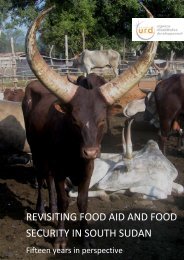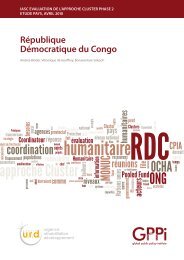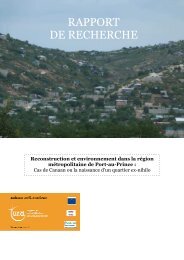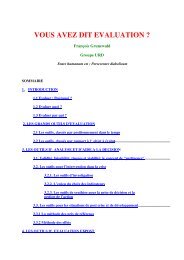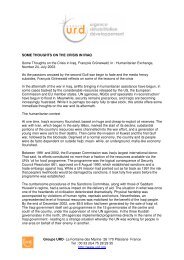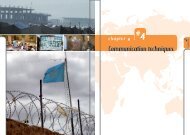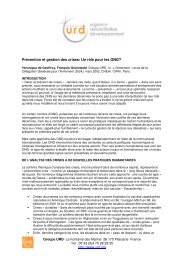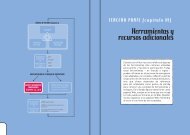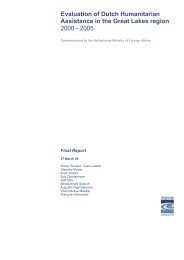strategies to counter opiate in Afghanistan - Groupe URD
strategies to counter opiate in Afghanistan - Groupe URD
strategies to counter opiate in Afghanistan - Groupe URD
You also want an ePaper? Increase the reach of your titles
YUMPU automatically turns print PDFs into web optimized ePapers that Google loves.
EXECUTIVE SUMMARY<br />
Almost ten years after the <strong>in</strong>ternational<br />
community’s military <strong>in</strong>tervention and<br />
the fall of the Taliban regime, the<br />
question of the production of opium <strong>in</strong><br />
<strong>Afghanistan</strong> is, more than ever, of central<br />
concern <strong>to</strong> ac<strong>to</strong>rs and the <strong>in</strong>ternational<br />
community <strong>in</strong> particular. Dur<strong>in</strong>g the past<br />
decade, there has been a succession of<br />
policies and programmes aim<strong>in</strong>g <strong>to</strong><br />
reduce drug production either through<br />
eradication, repression or via the<br />
implementation of alternative<br />
agricultural or rural development<br />
activities. What results have these<br />
produced What lessons can be drawn<br />
from them<br />
In order <strong>to</strong> answer these questions, this<br />
study analyses the different activities<br />
which have been implemented <strong>in</strong> the last<br />
decade as part of the National Drug<br />
Control Strategy (NDCS) – by<br />
highlight<strong>in</strong>g their strengths and<br />
weaknesses and the constra<strong>in</strong>ts <strong>in</strong>volved<br />
<strong>in</strong> implement<strong>in</strong>g them – and makes some<br />
strategic and operational<br />
recommendations <strong>to</strong> contribute <strong>to</strong> the<br />
debate about policies and programmes.<br />
Due <strong>to</strong> the scale of the subject (the wide<br />
variety of activities and large number of<br />
ac<strong>to</strong>rs with very different approaches),<br />
the decision was made <strong>to</strong> analyse <strong>in</strong><br />
detail a selection of development<br />
programmes directly or <strong>in</strong>directly<br />
related <strong>to</strong> the fight aga<strong>in</strong>st <strong>opiate</strong>s, and <strong>to</strong><br />
give only a general overview of the<br />
achievements and key issues of the other<br />
pillars of the NDCS.<br />
The study is based on detailed analysis of<br />
exist<strong>in</strong>g literature and on <strong>in</strong>terviews with<br />
representatives of Afghan m<strong>in</strong>istries,<br />
<strong>in</strong>ternational governments, United<br />
Nations agencies and researchers who<br />
work on <strong>counter</strong>-narcotics activities.<br />
Opium <strong>in</strong> <strong>Afghanistan</strong><br />
Opium production was marg<strong>in</strong>al <strong>in</strong><br />
<strong>Afghanistan</strong> before the Soviet <strong>in</strong>vasion. It<br />
began <strong>to</strong> <strong>in</strong>crease <strong>in</strong> the context of the<br />
war economy and as a cop<strong>in</strong>g strategy <strong>in</strong><br />
the 1990s before becom<strong>in</strong>g a ma<strong>in</strong> cash<br />
crop, with a considerable <strong>in</strong>crease <strong>in</strong> the<br />
area cultivated s<strong>in</strong>ce 2001. Production<br />
has fallen s<strong>in</strong>ce the record levels of 2007,<br />
but it still rema<strong>in</strong>s very high: 6 900<br />
<strong>to</strong>nnes were harvested <strong>in</strong> 2009, for a<br />
cultivated area of 123 000 ha. A<br />
noticeable change <strong>to</strong>ok place <strong>in</strong> the<br />
location of opium cultivation between<br />
2004, when production was generalised<br />
across the country, and 2009, when<br />
production became concentrated <strong>in</strong><br />
southern prov<strong>in</strong>ces and <strong>in</strong> the western<br />
prov<strong>in</strong>ce of Badghis. Certa<strong>in</strong> prov<strong>in</strong>ces<br />
have obta<strong>in</strong>ed “poppy-free” status for a<br />
number of years, whether consecutive or<br />
not. This is awarded by UNODC <strong>to</strong><br />
prov<strong>in</strong>ces which have less than 100 ha of<br />
poppies. In parallel <strong>to</strong> the <strong>in</strong>creas<strong>in</strong>g area<br />
cultivated, there has been an enormous<br />
boom <strong>in</strong> the entire <strong>opiate</strong> <strong>in</strong>dustry <strong>in</strong> the<br />
last decade. 60% of the drugs produced<br />
<strong>in</strong> <strong>Afghanistan</strong> – morph<strong>in</strong>e and hero<strong>in</strong> –<br />
are currently made <strong>in</strong> labora<strong>to</strong>ries <strong>in</strong> the<br />
ma<strong>in</strong> prov<strong>in</strong>ces where poppies are<br />
grown (Helmand, Nangarhar and<br />
Badakhshan).<br />
Strategies <strong>to</strong> <strong>counter</strong> <strong>opiate</strong> production <strong>in</strong> <strong>Afghanistan</strong><br />
<strong>Groupe</strong> <strong>URD</strong> | Ju<strong>in</strong> 2010<br />
7



